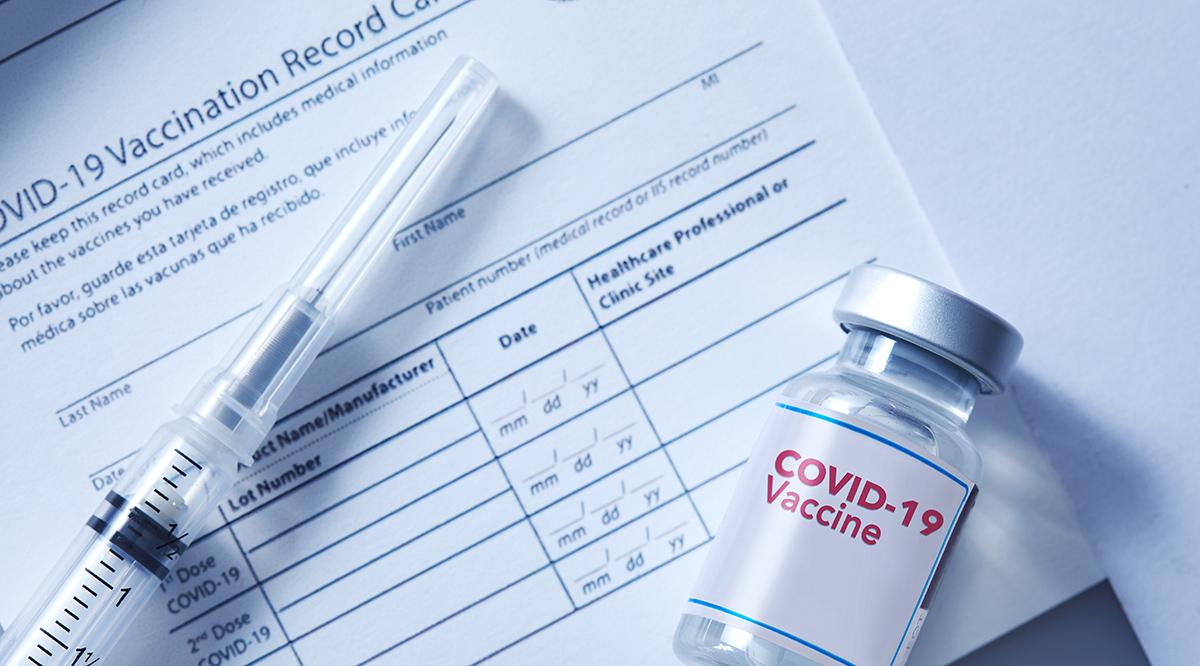Editor's note: This story was first published on Aug. 14, 2024, and has been updated to reflect the Food and Drug Administration's approval of updated vaccines.
If there’s one thing that’s predictable about the virus that causes COVID-19, it’s that it will continue to evolve and find new ways to infect — and reinfect — the world’s population.
The latest mutations of SARS-CoV-2 — specifically KP.1, KP.2, KP.3, and their sublineages — accounted for most infections in the United States as of the first week of August, according to Centers for Disease Control and Prevention (CDC) surveillance. A combination of slightly greater transmissibility, partial escape from immunity, and waning immunity from previous vaccinations and infections set the stage for another summer COVID-19 surge, explains David Montefiori, PhD, director of the Laboratory for HIV and COVID-19 Vaccine Research and Development in the Department of Surgery at Duke University School of Medicine in Durham, North Carolina.
As of Aug. 3, the percentage of people reporting positive tests for the virus had reached its highest point since January of 2022, and emergency room visits and hospitalizations due to COVID-19 also inched up, according to the CDC’s data tracker. However, deaths remained far below the weekly rates during previous surges, with 340 reported during the week ending Aug. 3, compared with 2,578 weekly deaths during the last COVID-19 peak, in January 2024, and nearly 26,000 weekly deaths at the height of the pandemic in the United States, in January 2021.
On Aug. 22, the Food and Drug Administration (FDA) approved the updated mRNA vaccines developed by pharmaceutical companies Moderna and Pfizer-BioNTech for people 12 years and older and granted emergency use authorization for the same vaccines for children six months to 11 years old. They are now available at pharmacies and doctors’ offices.
AAMCNews spoke with academic experts in infectious disease, viruses, and vaccines to answer some common questions about the latest variants and the new vaccines.
How are new variants different from previous strains?
SARS-CoV-2 is constantly evolving, but most of the mutations are inconsequential, Montefiori explains.
“There are many, many subvariants we don’t even hear about,” he says. “We hear about the ones that are most common at a particular time.”
The now-dominant KP.2 and KP.3 variants, which are part of a family of strains collectively referred to as FLiRT variants because of the part of the virus where they have mutated, are subvariants of JN.1, which is a subvariant of omicron.
Omicron appeared in late 2021 and was the last variant to mutate enough to significantly escape immunity from the original strain and vaccines tailored to it. Since then, the variant mutations have had only small impacts on immune evasion.
“There’s very little difference among these variants [JN.1, KP.2, and KP.3], and that’s a good thing,” Montefiori says. “However, all three of [them] have escaped [immunity] up to five- to tenfold, compared to the XBB variant contained in last fall’s booster.”
Scientists are most concerned when there are mutations to the virus’s spike protein, which is what the virus uses to attach to and infect cells. The spike protein is also the part of the virus that the vaccines have been developed to target. The FLiRT variants have several minor mutations to the spike protein — perhaps enough to trick antibodies for a while — but not enough to completely evade immunity, Montefiori explains.
How long are you protected after getting a COVID-19 vaccine or infection?
The antibodies that are triggered from either a vaccination or an infection generally last for three to four months, notes Kawsar Talaat, MD, a vaccinologist and associate professor in the Department of International Health at the Johns Hopkins Bloomberg School of Public Health and the Johns Hopkins School of Medicine in Baltimore.
The reason COVID-19 cases increased this summer is likely because people who hadn’t been recently vaccinated or infected had fewer antibodies at the ready to fight off the first sign of the virus and were more likely to experience its symptoms, including fever, chills, sore throat, cough, congestion, body aches, gastrointestinal issues, and fatigue.
In a study examining COVID-19 infections, hospitalizations, and deaths in Nebraska after vaccination with the 2023-2024 vaccines that targeted the XBB.1.5 variant, researchers found that vaccine effectiveness peaked four weeks after vaccination and then gradually waned, particularly as the new JN.1 variant began circulating.
“The data showed very clearly [the vaccine-induced immunity] waning over time, indicating there’s a need to target the circulating variants,” says the study’s lead author, Danyu Lin, PhD, Dennis Gillings Distinguished Professor of Biostatistics at the University of North Carolina Gillings School of Global Public Health in Chapel Hill.
However, he adds that there were greater uncertainties about the effectiveness against hospitalization and death than against infection due to the relatively small number of hospitalizations and deaths.
As of May, only 22.5% of adults in the United States reported having received the updated 2023-2024 vaccine that was released last fall and tailored to the XBB variant dominant at that time, meaning many of those being infected now have significantly reduced immunity to the current mutated virus, Montefiori says.
Still, those who have healthy immune systems and have previously been vaccinated or infected are less likely to experience the more severe cases of COVID-19 that result in hospitalization or death. That’s thanks to the immune system’s second layer of defense — the T cells, which attack and kill infected cells, thereby shutting down the virus production factory.
This may be why hospitalizations and deaths rose only slightly this summer, since most people had some previous exposure to the virus, a vaccine, or both.
Will the new vaccines target the latest variant?
Decision-makers at the FDA faced a dilemma when it came to guidance for producing updated COVID-19 vaccines: Create vaccines tailored to the strain circulating in the spring, or wait to adapt the vaccine to a variant that was more likely to be dominant in the fall and risk delaying the production and rollout.
At its June meeting, members of the FDA’s vaccine advisory committee debated the options: whether to recommend that manufacturers develop vaccines targeted toward JN.1, which was dominant until May, or targeted toward one of the FLiRT variants. Complicating the decision was the fact that Novavax, an American biotechnology company, had already developed a JN.1-targeted vaccine and the company said it wouldn’t have time to change the formulation before the fall. Novavax’s vaccine is the only protein-based COVID-19 vaccine that doesn’t use the newer mRNA technology that the other manufacturers, Moderna and Pfizer-BioNTech, use in their vaccines.
“It’s important to have Novavax as an option because some people are still concerned about mRNA [technology],” says Mark Sawyer, MD, a professor of clinical pediatrics and a pediatric infectious disease specialist at the University of California San Diego (UCSD) School of Medicine and Rady Children’s Hospital-San Diego, and a member of the FDA’s vaccine advisory committee. “Novavax allows them an option to still be protected.”
The mRNA vaccines, which the CDC says are very safe based on safety data from millions of vaccinations, can be more quickly adapted to the FLiRT variants.
The advisory committee recommended that the FDA authorize vaccines targeting the JN.1 lineage rather than the KP.2, but the FDA’s final decision was a preference for KP.2-targeted vaccines, while also allowing Novavax to proceed with the JN.1-targeted vaccine.
In preclinical trials in mice, Moderna found that a previous version of the vaccine updated to target JN.1 showed high levels of neutralizing antibodies against not only JN.1 but the FLiRT variants as well, according to a Moderna spokesperson.
In late August, the FDA approved the KP.2-targeted, mRNA vaccines for adults.
Montefiori says that the specific formulation doesn’t make a huge difference, since the latest variants haven’t mutated enough to avoid neutralizing antibodies completely. The important thing, he says, is to remain up-to-date on vaccination.
Is it time to wear a mask again?
While the days of mask mandates are in the past, some physicians advise strategic masking. In a recent interview with MedPage Today, Anthony Fauci, MD, former director of the National Institute of Allergy and Infectious Diseases, said that he wears a mask when on a plane or in a crowded indoor place, particularly because he is 83 years old and at high risk of severe COVID-19.
Sawyer also recommends masking while traveling or in high-risk situations.
“If you’re in a community where the virus is surging, as so many people are, it is smart to wear a mask if you’re in indoor, crowded conditions,” he says. “Especially people who are at high risk, it’s time to break out their masks again.”
What if I get COVID-19?
If you start to experience any COVID-19 symptoms, the CDC recommends isolating to prevent spreading the virus to others, particularly those in high-risk groups, and taking an at-home COVID-19 test. The CDC also recommends that those in high-risk groups see their doctor for a prescription of the antiviral medication Paxlovid. This includes people 65 and older or anyone over age 12 with a condition that is a risk factor for severe COVID, including diabetes, asthma, heart disease, obesity, or pregnancy. According to the Paxlovid website, 75% of Americans have a risk factor that might make them eligible for the antiviral. The prescription must be started within five to seven days of developing symptoms. One retrospective study found that Paxlovid treatment reduced hospitalization by 26% and death by 73%.
Some people have reported a rebound of symptoms after taking Paxlovid and initially recovering from symptoms. The CDC says this could be a feature of COVID-19 infection, regardless of whether the person took Paxlovid, and that anyone who experiences a rebound of COVID-19 symptoms should follow the isolation guidelines.
According to CDC guidelines, you can resume normal activity if your symptoms have improved for 24 hours and you haven’t had a fever in 24 hours without taking a fever suppressant, but you should continue to take extra precautions, like masking, for an additional five days.
What will the future of COVID-19 entail? Will we need new vaccines every year?
Montefiori predicts that we will need annual updated COVID-19 vaccines, just as seasonal flu shots are the norm.
However, future vaccines may be different. Moderna is testing a combination COVID-19 and flu shot. A nasal vaccine, also in the works, might be more effective at preventing infection, since the virus is airborne and the antibodies could be more localized to catch the virus upon entry to the body, Talaat explains.
But how well the vaccines work will depend largely on people getting them. Though COVID-19 is not as dangerous as it once was, it is still deadly for some, including young children, the elderly, and the immunocompromised, and it carries the risk of long COVID.
The mRNA vaccines have a strong safety profile, Sawyer says, with data from millions of vaccinations showing that the worst side effects — myocarditis (inflammation of the heart) and Guillain-Barré syndrome (a neurological disorder) — are incredibly rare.
“You’re better off getting the vaccine than not, even with all of its weaknesses," Sawyer says. “The fact that it doesn’t last that long, and it takes time and effort to go get it, all of those things are worth it to protect yourself and your family.”

